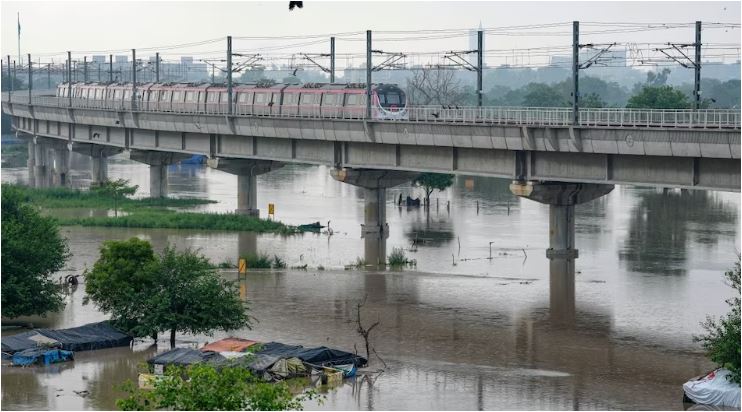Delhi, the capital city of India, has been grappling with a significant increase in the frequency and intensity of floods in recent years. These devastating floods have caused widespread damage, disrupted daily life, and highlighted the urgent need for understanding the underlying causes behind this alarming phenomenon. While natural factors such as heavy rainfall play a significant role, it is important to explore various human-induced factors that contribute to the recurring floods in Delhi.

1. Urbanization and Encroachment:
Rapid urbanization has led to the conversion of open spaces, wetlands, and floodplains into concrete structures, reducing the natural capacity of the land to absorb excess water. Unplanned construction, including encroachments on natural drainage channels, restricts the flow of water and exacerbates flood risk. The unchecked growth of urban infrastructure without adequate consideration for water management has left Delhi vulnerable to flooding.
2. Inadequate Drainage System:
Delhi’s drainage system, designed to cater to a much smaller population, is ill-equipped to handle the heavy rainfall events witnessed in recent years. The city’s outdated stormwater drains are often clogged with solid waste, causing water to accumulate on roads and low-lying areas. The inadequate maintenance and expansion of the drainage infrastructure have impeded efficient water runoff, increasing the likelihood of floods during monsoon seasons.
3. Climate Change:
The impact of climate change cannot be overlooked when discussing the causes of floods in Delhi. Changing weather patterns, including intense rainfall events and extended monsoon seasons, are likely consequences of global climate change. These climatic shifts intensify the volume of water entering the drainage system and overwhelm its capacity, leading to floods. Rising temperatures also contribute to the faster melting of snow in the Himalayan region, resulting in increased water flow downstream towards the city.
4. Poor Waste Management:
The improper disposal of solid waste, including plastic and debris, exacerbates the flooding problem in Delhi. Clogged drains and water bodies prevent the natural flow of water, leading to waterlogging and subsequent flooding. The lack of awareness and inadequate waste management practices contribute to the accumulation of waste in drains and worsen the flood risk.
5. Lack of Coordination and Planning:
The absence of comprehensive coordination and planning among different government agencies responsible for water management in Delhi hampers effective flood prevention measures. The absence of a holistic approach results in fragmented efforts, delayed responses, and ineffective flood control strategies. Improved coordination and integrated planning are crucial for mitigating flood risks and enhancing the city’s resilience.
Conclusion:
The recurrent floods in Delhi are a result of a complex interplay of natural and human-induced factors. Addressing the problem requires a multifaceted approach, including better urban planning, sustainable drainage systems, improved waste management, and proactive measures to adapt to climate change. Recognizing the significance of these factors and implementing appropriate solutions will help Delhi overcome its flood-related challenges and create a more resilient and sustainable future.




